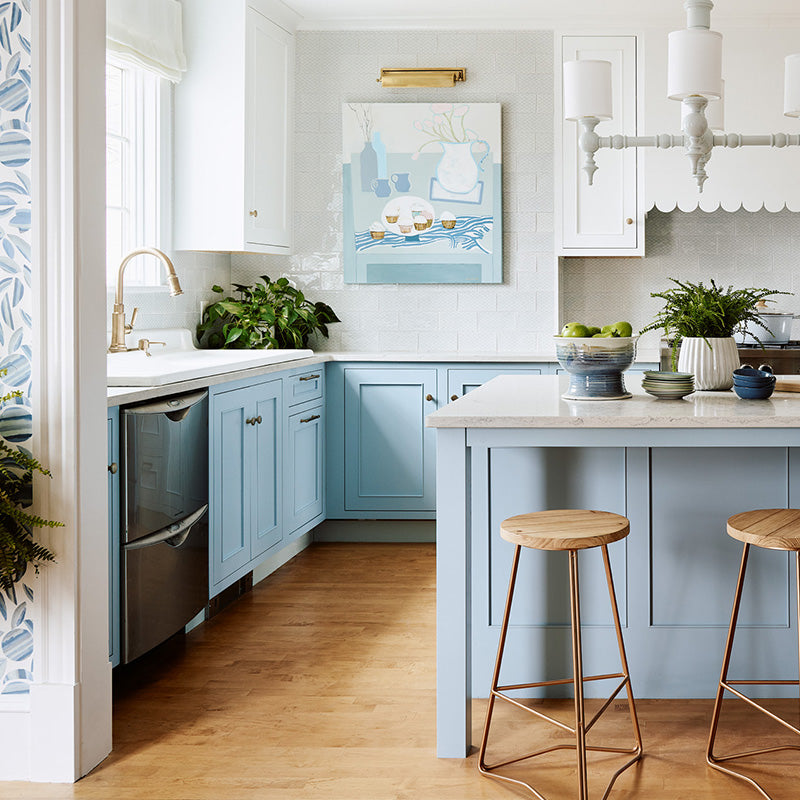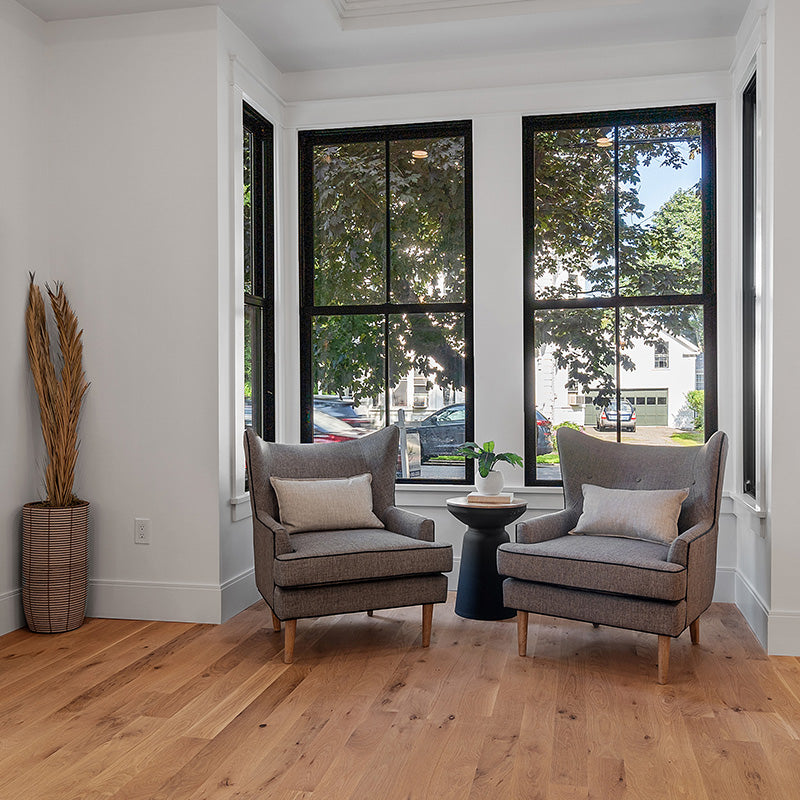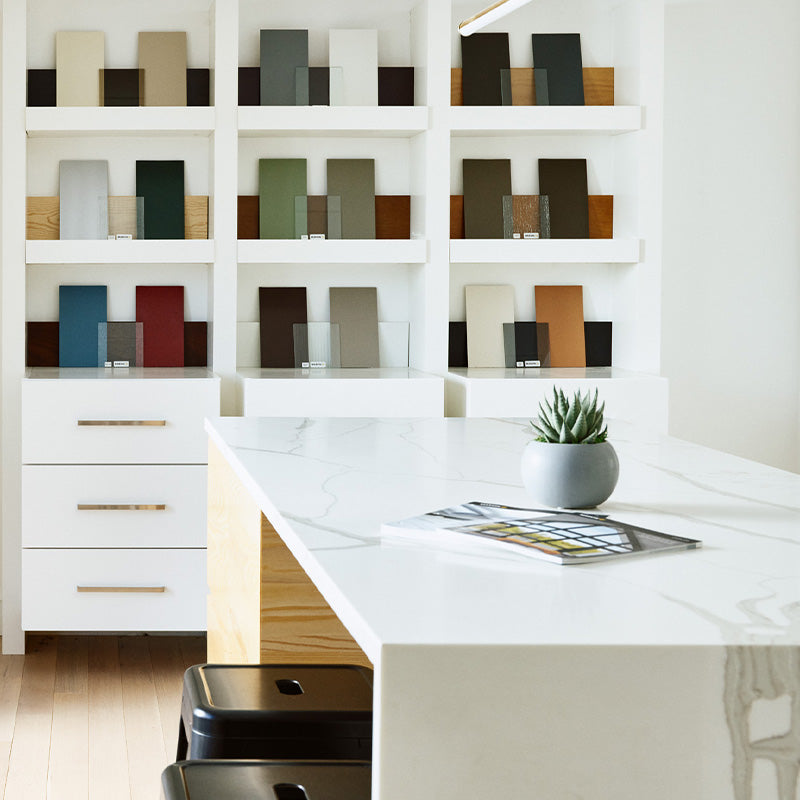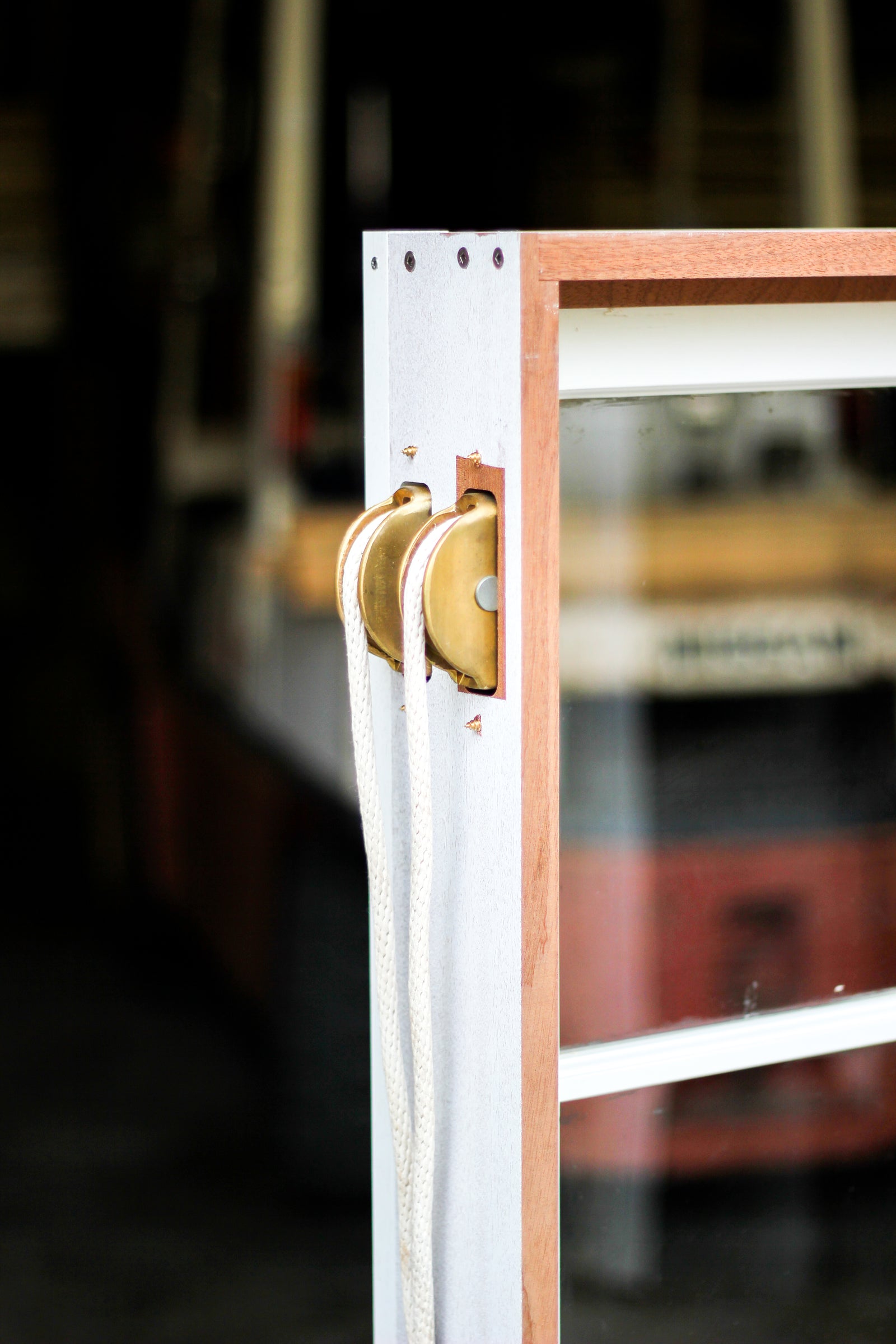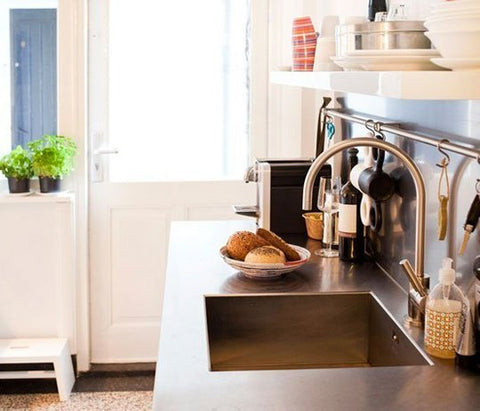Products
Projects
Resources

Stainless Steel Countertops
September 30, 2015
Restaurant kitchens all have one thing in common: stainless steal worktops. Their unparalleled durability makes this material a great choice in heavy use situations. Although, these countertops may be loud and unforgiving with glassware. Stainless steel countertops are virtually indestructible, non porous and heat resistant. Often used in appliances, stainless has been infiltrating kitchens over the years. While some are turned off by the cool industrial feel, pairing softer features like wood can help warm things up.

What is stainless steel?
Steel that contains at least 10.5 percent chromium is considered stainless, or resistant to rust and corrosion. Stainless steel is manufactured in sheets with a variety of gauges. These gauges, usually ranging from 14 to 20, represent the thickness of the sheet. The lower the gauge, the thicker the steel. The thicker the steel, the stronger your counter will be. Lower gauges hold up to weighty equipment and heavy use without denting.
Residential projects generally use 16- and 18-gauge steel, while 14 gauge is found in many commercial settings. The various grades of steel are dependent on what other types of alloys are mixed in. Food-grade steel uses higher level of chromium and nickel to increase its stain and heat resistance. Also known as Type 304 or austenitic steel, food grade steel does not harbor bacteria. Feel free to place your cooking utensils or food directly on the surface.
You can buy stainless steel in a standard sheet, but they also come in custom shapes and sizes. Sheets of steel are cut to size and placed over a wooden substructure. Some choose to bring the steel up the wall to create a backsplash. The edges of the counter can be wrapped for a more standard countertop style. They can also be cut flush with the base to expose the wood on the edges, beveled, or any other style of your choosing.

Finish Options
Stainless steel counters are available in multiple finishes: brushed, satin polish, mirror polish, antique matte, and many other specialty finishes. The most popular finish is brushed due to it’s soft and smooth feel. It is also the best finish for covering up smudges, scratches and fingerprints. Conversely, a mirror polish requires frequent elbow grease to keep these minor mars at bay and maintain it’s high shine.
Cleaning & Maintenance
Most everything can be cleaned off stainless steel surfaces with mild soap and water. It’s non porous nature means foods and liquids sit on top of the surface and don't soak in. Fingerprints and other smudges can be taken care of with just a soft cloth. Stainless steel specific polishes are available but are often unnecessary. While these counters are almost indestructible but there is no way of hiding all the signs of use over time.
Is Stainless Steel the Right Choice for You?
Stainless steel can offer you an indestructible surface for your heavily work station. It’s non porous, meaning it won’t harbor stains or bacteria. Hot pots and pan can go straight on the surface, the counter will warm up but the heat won’t travel. Like other countertops, cutting boards are recommended. The steel can damage your knives and while they are impervious to most damage, steel does scratch. Brushed finishes can help hide these small scratches, but over time they will show and are considered as patina.
The cool metal finish can often feel to industrial and if you are working on these surfaces all day you may not want them in your home as well. The good news is that stainless steel can be paired with other warm surfaces. Butcher block is a great option here.
| Pros | Cons |
| Heat resistant—place hot pots right on the counter | Can dent & scratch, particularly the lower gauges |
| Hygienic & easy to clean | Fingerprints (though they come off easily) |
| Non-porous, won’t harbor bacteria | Can be loud |
| Practically indestructible, won’t stain or rust | Aesthetically cold |
| Expensive, unless taking the prefabricated option |
Subscribe Today!
Our goal is to provide you with as much information as possible. Our newsletter is full of tips, inspiration and featured projects. We promise to only send you interesting things and never share your email with anyone else.

